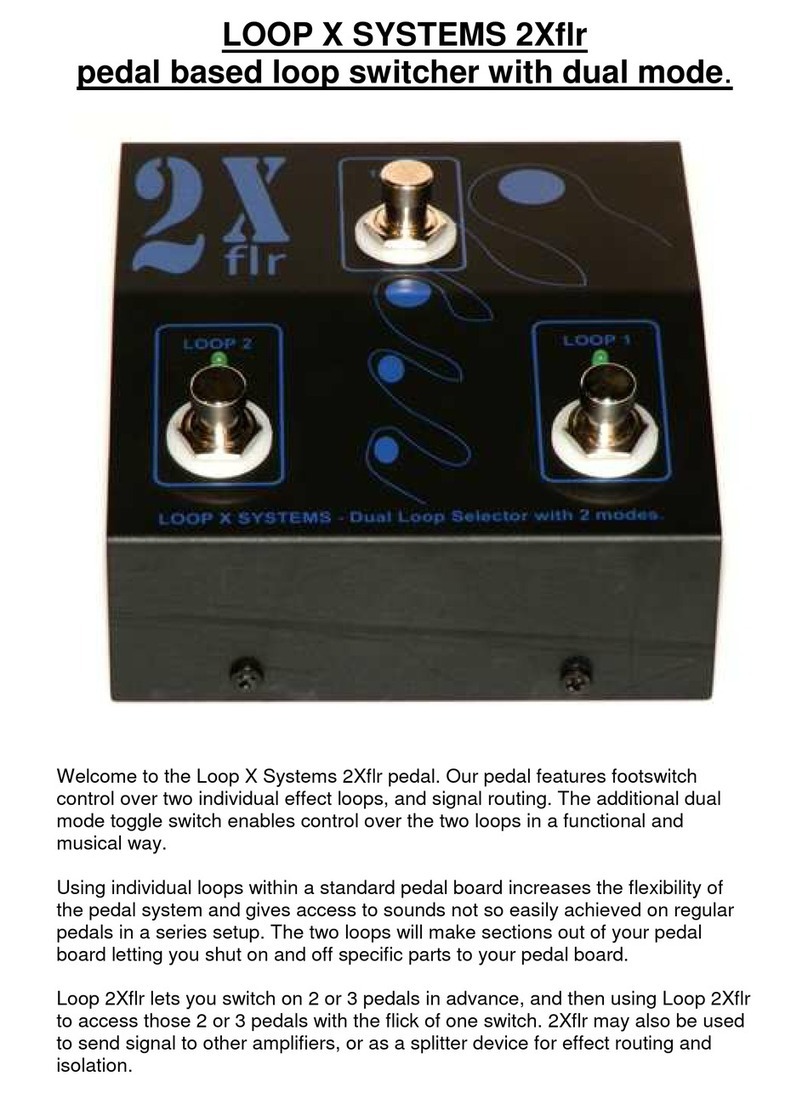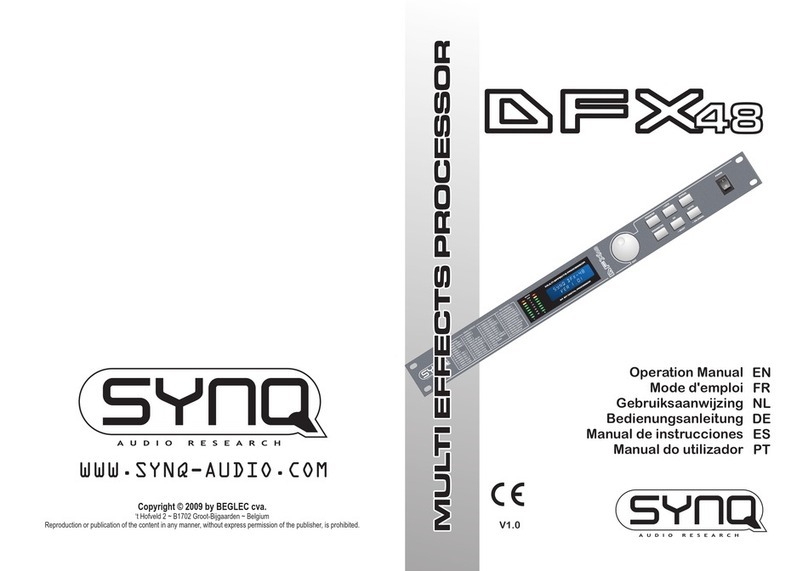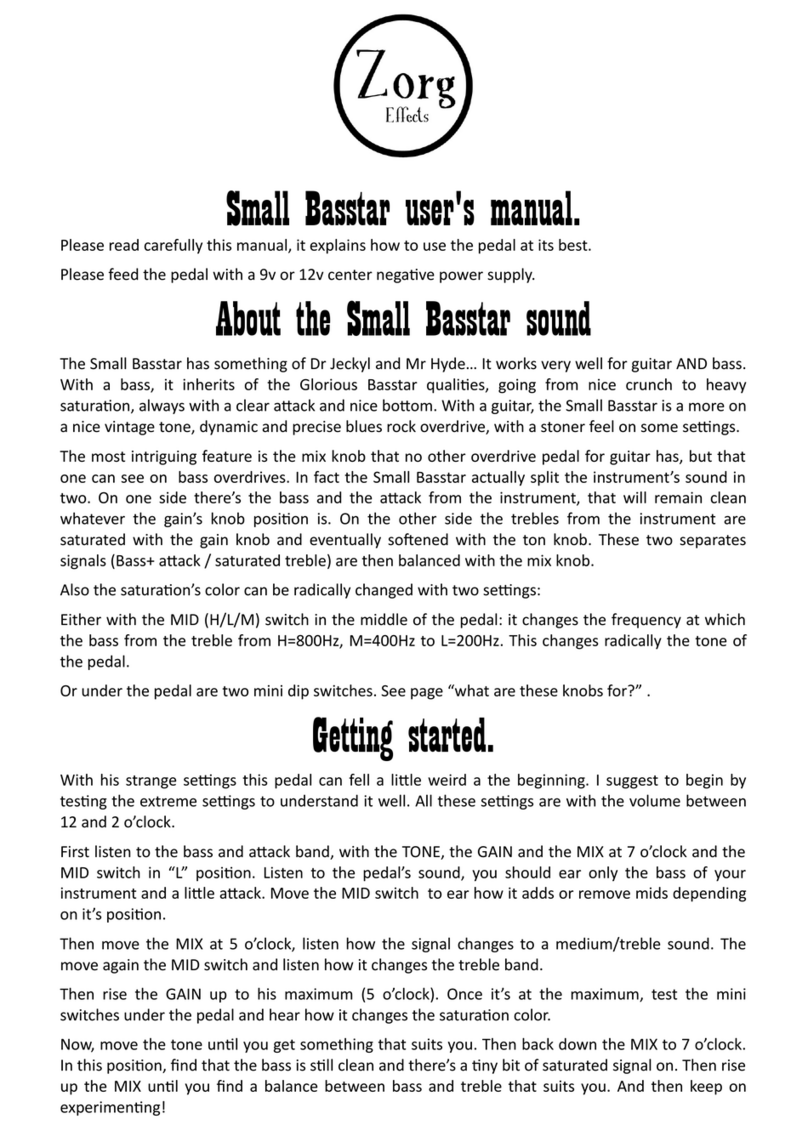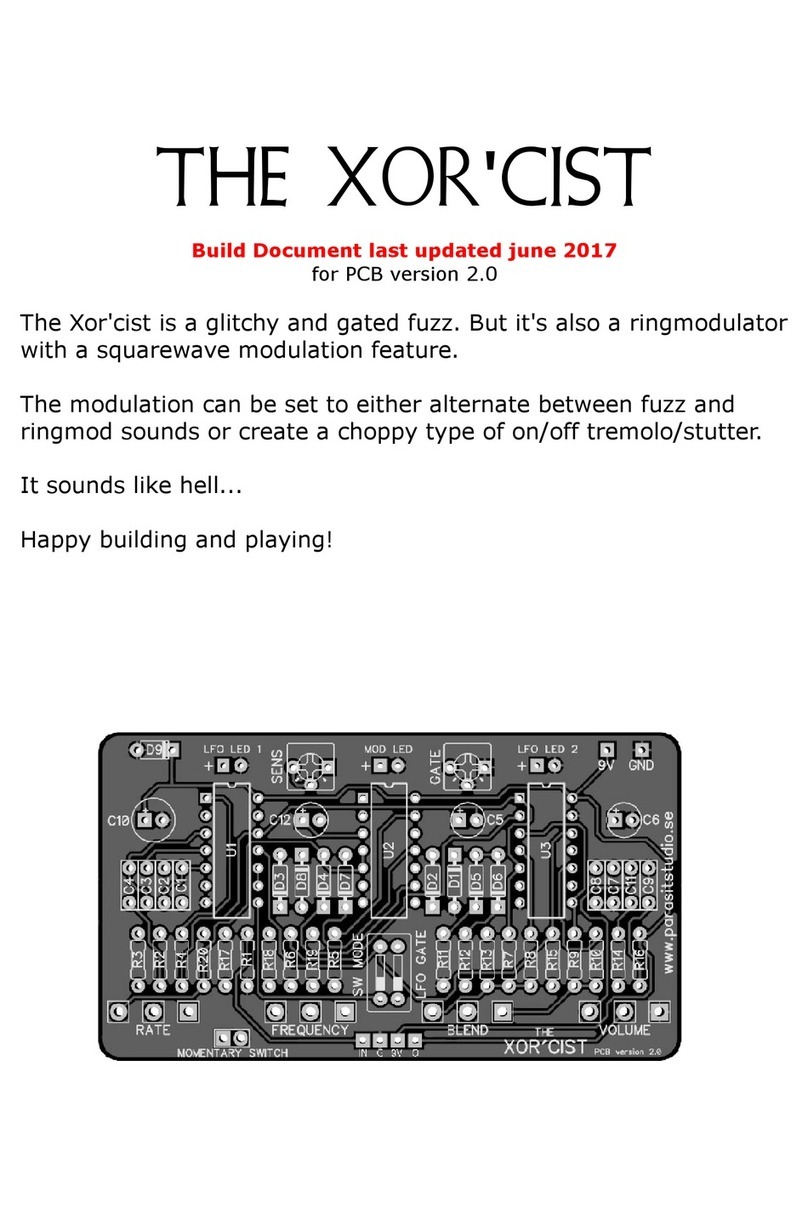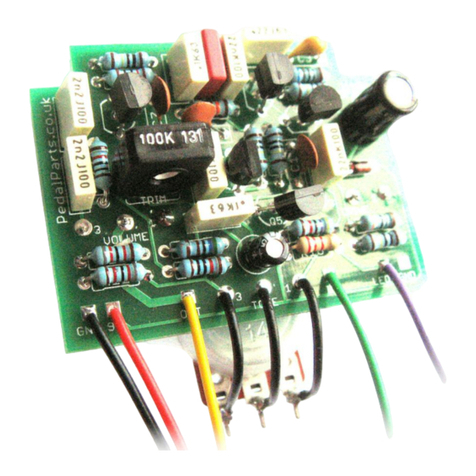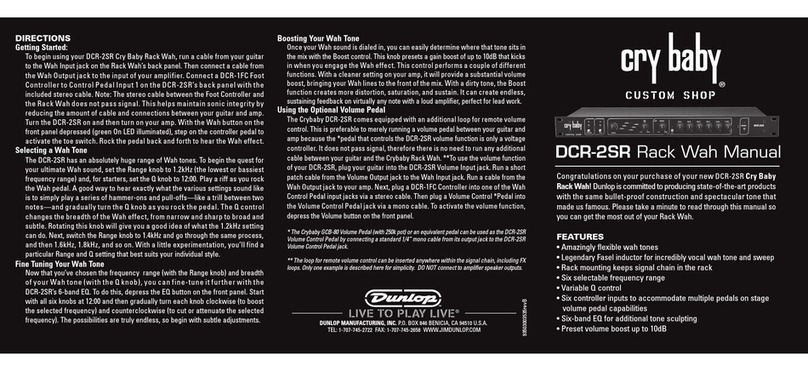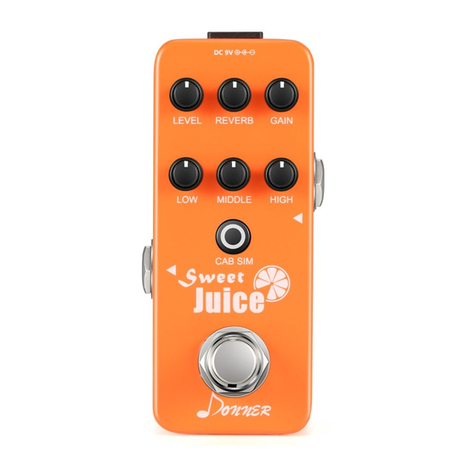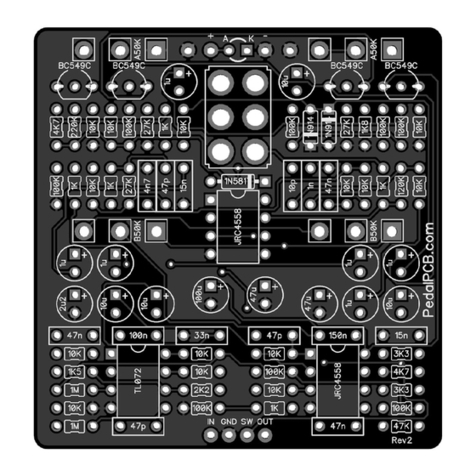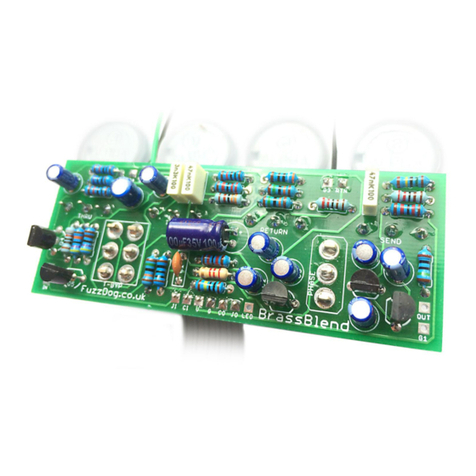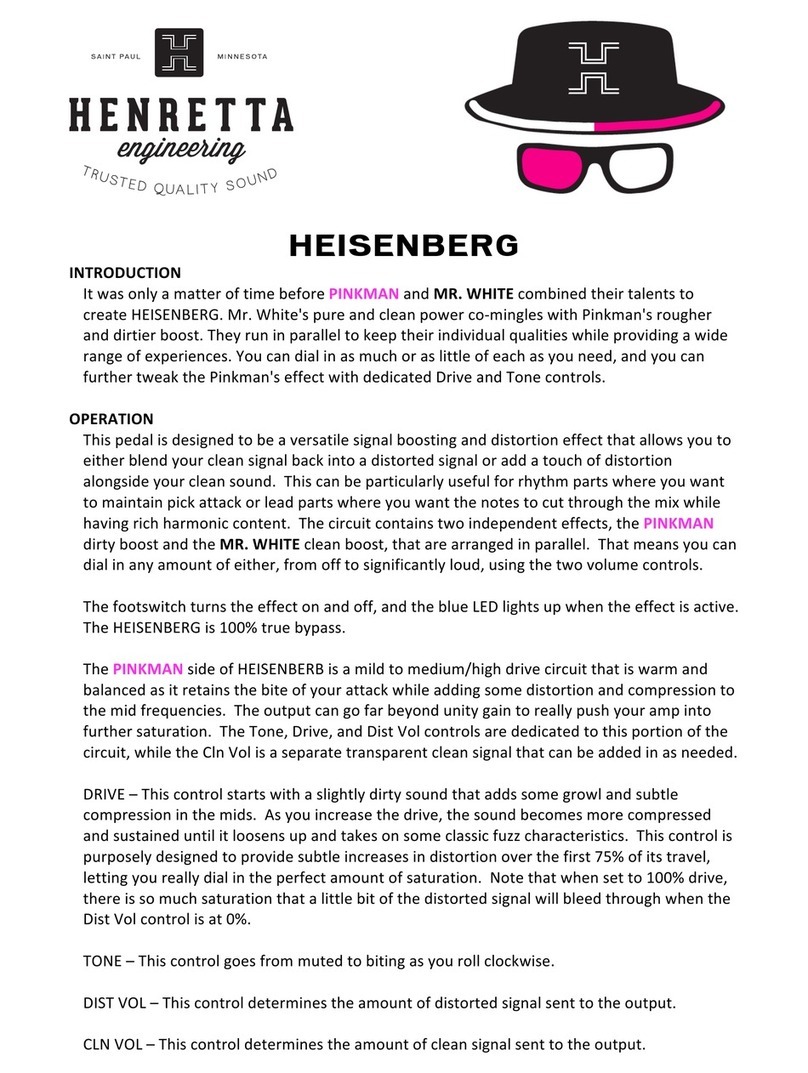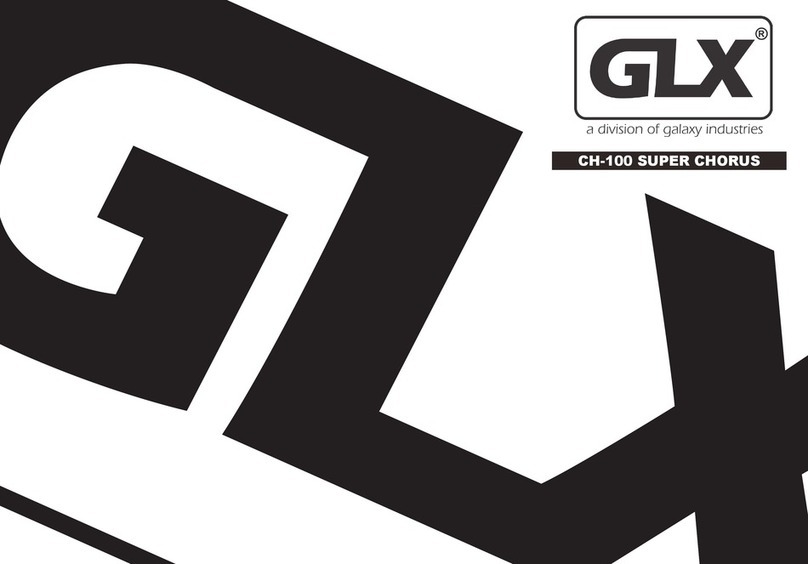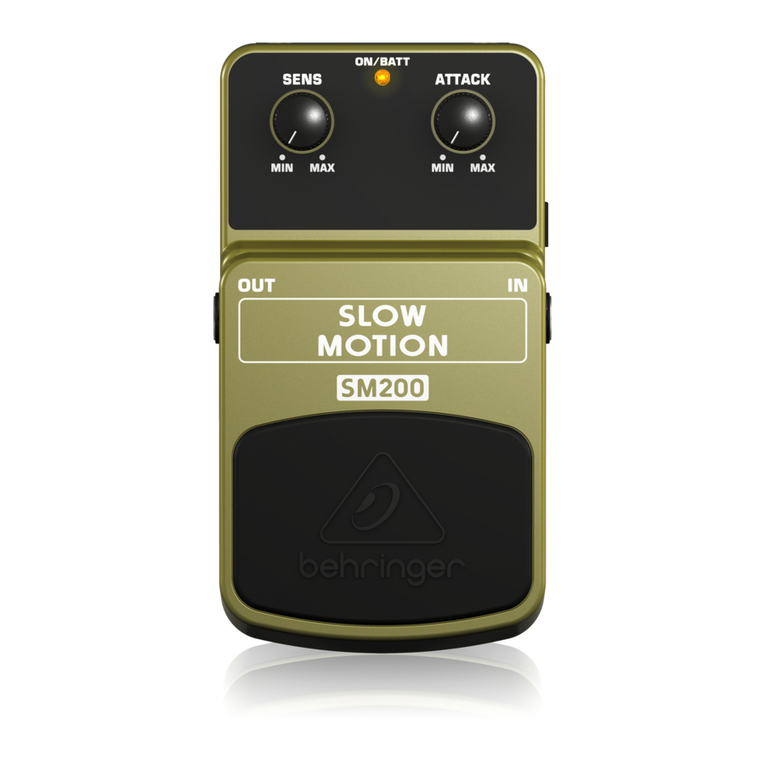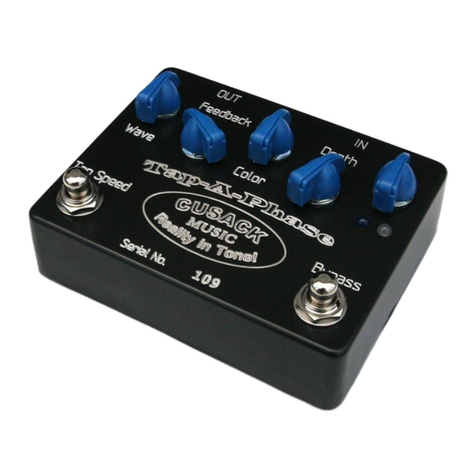dbx 290 User manual

Stereo
Reverb
dbx

Table of Contents
Safety
and
Warranty
. .
..
..............................2
Introduction
and
Inspection
............................3
Setup
Front Panel 4
Back Panel ....................................5
Connections 6
Operation
Selecting Reverbs ................................8
Bypass
Mode
9
Noise
Gate
9
MIDI
10
Reverb
Types
What is Reverb?
12
Room
12
Hall
12
Chamber
12
Plate
13
Cathedral
13
Gated
13
Specifications . 14

Safety
and
Warranty
Safety
Warranty
The
symbols
shown
at left are
internationally accepted symbols
that
warn
of potential hazards
A
,"'"''''
A
ATTE
NTIO
N:R,sOUE DECHOCELECTR'OUE·HEPAS
OUYRIR
with electrical products.
The
WA
RNIN
G:
TO
REDUCE
THE
RISKOFFIREOR ElECTRIC lightning flash with arrowpoint in
SHOCKDONOTEXPOSETHIS EQUIPMENTTORAINOR MOISTURE
an
equilateral triangle
means
that
there
are
dangerous
voltages present within
the
unit.
The
exclamation
point
in
an
equilateral triangle indicates that it is necessary for the
user
to refer to
the
owner's manual.
These
symbols
warn
that
there
are
no
user
serviceable
parts
inside
the
unit.
Do
not
open
the
unit.
Do
not
attempt
to
service
the
unit
yourself.
Refer
all
servicing
to
qualified
personnel.
Opening
the
chassis
for
any
reason
will
void
the
manufacturer's
warranty.
Do
not
get
the
290
wet.
If
liquid
is
spilled
on
the
unit,
unplug
it
immediately
and
take
it
to
a
dealer
for
service.
Disconnect
the
equipment
during
storms
to
prevent
damage.
-----*
••
_--
1.
The
warranty registration card must be mailed within 30 days after
purchase
date
to validate this warranty
and
proof-of-purchase is con-
sidered to
be
the
burden
of
the
consumer
.
2.
dbx
warrants this product,
when
bought
and
used
solely within
the
U.S., to
be
free from defects in materials
and
workmanship
under
nor-
mal use
and
service.
3.
dbx
liability
under
this warranty is limited to repairing or replacing
defective materials that
show
evidence
of defect, provided
the
product
is returned to
dbx
WITH
RETURN
AUTHORIZATION from
the
factory,
where
all parts
and
labor
will be covered
up
to a period of
two
years.
A Return Authorization
number
may be obtained from
dbx
by tele-
phone
.
The
company
shall not be liable for
any
consequential
damage
as a result
of
the
product
's use in any circuit or assembly.
4.
dbx
reserves the right to
make
changes in design or
make
additions to
or improvements
upon
this
product
without
incurring
any
obligation to
install the
same
on
products
previously manufactured.
5. The foregoing is in lieu of all
other
warranties, expressed or implied,
and
dbx
neither
assumes
nor
authorizes any
person
to
assume for it
any
obligation or liability in
connection
with
the
sale of this product.
In
no
event
shall
dbx
or its dealers be liable for special or
consequen-
tial
damages
or from
any
delay in
the
performance
of
this warranty
due
to causes
beyond
their control.

Introduction
and
Inspection
Introduction
We congratulate and thank
you
for
your
purchase
of
the
dbx
290 Stereo
Reverb.
The
290 is a true stereo,
dedicated
reverb
processor
designed
for the professional
who
needs
high quality results
without
the
chal-
lenges
of
complex
programming.
Whether
used
in
the
recording studio
or in live
sound
situations,
world
class reverbs
are
just a
button
press
away.
The
290 also includes
unheard
of signal to
noise
specifications for
products in its price range along with a digital noise gate that pushes
unwanted
noise
even
further
out
of
the
audio
picture. Some of the 290's
features include:
• True stereo reverb processing
..
• Signal to noise ratio of greater than 90dB
(w/o
noise gate)
• 40kHz sampling rate, 18 bit DACs, full
bandwidth
response
• Balanced Stereo Inputs
and
Outputs
•
Hundreds
of professional quality reverb possibilities
• Receives MIDI program
changes
Although
the
dbx
290 was designed to
be
the easiest reverb
on
the mar-
ket to use,
we
suggest that
you
read
this
operation
manual
to fully
understand
the
290's power. We
have
kept
the
manual
simple
and
easy
to read so that
you
can get
back
to
work
quickly.
We
hope
you
enjoy
your
290
and
thanks
again for purchasing a quality
dbx
product.
-----.-----
Inspection
Before continuing any further, please inspect
the
contents
of
the
dbx
290
box
to
be
sure
that the following items
are
included
:
•
dbx
290 Stereo Reverb
• External
power
supply
• Operation Manual (yes,
you
are
already
reading
it)
• RegistrationlWarranty card
If anything is missing, please notify
your
dealer.
The
information contained in this
manual
is subject to
change
at
any
..
time without notification. Some information
contained
in this
manual
may also
be
inaccurate
due
to
undocumented
changes
in
the
product
or
operating system since this version
of
the
manual
was
completed
.
Stereo
-
=
~
••
•
8~.0m
~
~
~
~
3

Setup
Front
Panel
2 3 45 6 78
1)
Type
Buttons
-Used to select
one
of six different reverb Types.
The
LED inside
the
selected
bunon
lights to indicate the current reverb
Type being used.
2)
Size/Gate
Shape
Buttons
-Used to select
one
of three different
reverb Sizes or Gated Shapes if the Gated reverb Type is selected.
The
LED inside the selected
bunon
lights to indicate the current
reverb Size or Shape being used.
3)
Color
Buttons
-Used to select
one
of three different reverb Colors.
The
LED inside the selected
bunon
lights to indicate
the
current
reverb Color being
used
.
4)
Decay
Control
-Sets the length of the reverb's decay. Turning this
control clockwise increases the decay time while turning the control
counter-clockwise decreases the decay time.
There
are 12 different
times available (times are
dependent
on reverb Type
and
Size current-
ly selected).
5)
Input
Level
Meters
-These LEDs monitor the levels of
the
incoming
signals which
can
be adjusted using the Input control.
6)
Mix
Control
-Controls the
wet/dry
signal ratio. Turning the control
clockwise increases
the
amount of reverb
sent
to the outputs while
decreasing the original dry signal heard. Turning the control counter-
clockwise decreases the amount of reverb sent to the
outputs
while
increasing the original dry signal heard.
7)
Input
Level
Control
-Adjusts the level of
the
sound
sourc~
being
fed into the 290's stereo inputs. For best signal performance, set
these controls so that -0- LED on the input
meter
lights occasionally.
If this control is set
too
high,
unwanted
distortion may be
heard
in
the
output
signals.
8)
Output
Level
Control
-Sets
the
stereo
output
level
of
the
290. This
control
can
be placed in a mirror sening for
near
unity signal gain
through
the
processor (e.g,
Input
Level control
set
at a 2 o'clock posi-
tion
and
the
Output
Level control set at a 10 o'clock position).

Setup
Back Panel
23456 7 8
1)
Left/Mono
Input
-This is the
audio
input for
the
left
channel
of
the
290. It can
be
used
in either
balanced
ernS)
or
unbalanced
(TS)
- applications. For
mono
input configurations,
use
the
Left
Input
jack
only
and
leave
the
Right
Input
jack di
sconnected
.
2)
Right
Input
-This is the
audio
input for the right
channel
of
the
290.
It
can
be
used in either
balanced
(TRS)
or
unbalanced
(TS) applica-
tions. For
mono
input configurations, the Right
Input
jack must
be
disconnected.
3)
Left/Mono
Output
-This is
the
audio
output
for
the
left
channel
of
the 290.
It
can
be
used
in
either
balanced
(TRS)
or
unbalanced
(TS)
applications. For
mono
output
configurations, use
the
Left
Output
jack only
and
leave the Right
Output
jack
disconnected
.
4)
Right
Output
Jack
-This is the
audio
output
for
the
right
channel
of
the 290.
It
can
be
used
for either
balanced
(TRS)
or
unbalanced
(TS)
applications.
The
Right
Output
jack is
used
for
both
stereo
in/stereo
out
and
mono
in
/stereo
out
configurations. For
mono
output
configu-
rations,
the
Right
output
jack must be
disconnected
.
5)
Remote
Footswitch
-Allows
the
connection
of
an external
momen-
tary footswitch (Tip-Sleeve
plug)
for remotely placing the 290 into
bypass
mode
(indicated by flashing
the
selected
Type
/Size
/Color
LEDs). A three switch type
pedal
(Tip-Ring-Sleeve
plug)
may
also
be
used
to
add
Program
up
and
Program
down
capabilities.
6)
MIDI
Input
-
The
MIDI In port allows
the
290 to
respond
to incom-
ing MIDI program changes.
7)
290
Serial
Number
- This is
the
29O
's
unique
registration serial
num-
ber
.
8)
AC
Power
Adapter
Input
-This is
where
the
AC
power
adapter
is
connected
.
Warning:
Use only
the
Power
Adapter
supplied
with
the
290 from
the
factory. Using
any
other
Power
Supply
may
permanent-
ly
damage
the
290.
5

Setup
Connections Correctly connecting audio
and
power
to
any
signal
processor
is the
most
important
step
towards successful
audio
processing. Please follow
these
steps
carefully for best results:
1.
Turn
off
all
equipment
before
making
any
connections
2.
Mount
the
290
in
a rack.
(optional)
The
290 requires only
one
standard rack space.
It
can
be
mounted
above
or
below
anything that doesn't generate excessive heat, since it
requires
no
special ventilation. Ambient temperatures should
not
exceed
113·F (45·C)
when
equipment
is powered.
3.
Make
audio
connections
via
1/4"
phone
jacks
according
to
your
requirements.
Although
the
290 is a true
stereo
reverb processor, it can also be
used
in a
mono
in!stereo
out
or
mono
in
/mono
out
configuration.
The
290 configures itself by sensing
whether
or not plugs
are
inserted into
the
Right
Input
and
Right
Output
jacks.
For
mono
input
applications,
use
the
Left
Input
jack only. For
stereo
input
applications, use
both
Left
and
Right
Input
jacks.
Likewise, for
mono
output
applications,
use
the
Left
Output
jack only.
For
stereo
output
applications,
use
both
Left
and
Right
Output
jacks.
Typically,
the
29O
's inputs
are
connected
to
the
auxiliary
sends
(some-
times called effect
sends)
of a mixing console.
The
290's outputs
are
then
connected
to
the
effect returns
on
the
console
. For best results,
a
stereo
effect return
should
be
used
. See figure 1-1.
Figure
1-1
The
290
can
also
be
used
in a keyboard
setup
as in figure 1-2
or
in a
guitar rig as in figure 1-3.

--
Setup
..
Figure
1-2
Figure
1-3
4.
Connect
the
AC
power
supply
(shipped
with
the
unit)
to
the
rear
panel
jack
labeled
POWER
and
then
plug
the
AC
power
supply
to
an
appropriate
AC
power
source.
The 290, like any piece of
computer
hardware, is sensitive to voltage
drops, spikes,
and
surges. Interference
such
as lightning or
power
"brownouts"
can
seriously, and in extreme cases, permanently dam-
age the circuitry inside the unit.
• Spike/Surge Suppressors - This is an inexpensive solution to
all but the severest of AC line dangers. Surge protected
power
strips usually cost only slightly
more
than
unprotected
strips,
making them a worthy investment for protection of all
your
valuable gear.
• AC Line Conditioners - This is the best
way
to
go
for total pro-
tection from improper line voltages, albeit
the
more
expensive
way. Line conditioners constantly monitor for excessively high
or low voltages
and
adjust accordingly, thus delivering consis-
tent
power
levels.
To help
keep
things quiet, be sure to
keep
audio
lines as far
away
from
power
lines as possible. If it is necessary to cross
audio
and
AC
lines, cross them perpendicular to
one
another
. As a rule,
never
allow parallel audio and AC lines to lie close to
each
other
.
5.
Power
may
now
be
re-applied
to
your
other
equipment.
Stereo
fev;r
,aaJ
~
(lJ
mm
(IJ
mm!mmmm
:
m
·
·
·
~M
D
~
m
M
!1.
W{
&
f[
g:.
]
.
0
%
• •
r@;
m
:
m:
w
~:
r
:
wwW
r:::r
:k:~W}
j~w;%
t(:r
;
::
:;
,
...
:.:::
••
··
:.·.·.·:
·.
·
•.
··
7
ii
_
,
fj
m
W
ii
m
IHJ
"?'
m
£
m
t
~
•••

Operation
Selecting Reverbs The 290 has
been
designed
to
make
reverb selection as quick
and
easy
as possible. Reverbs
are
divided into four parts:
• Type -Six
standard
reverbs are available in the 290: Room, Hall,
Chamber, Plate, Cathedral,
and
Gated. These are described further
in the Reverb Types Section
(page
12).
•
Size/Shape
-
There
are three possibilities available: Small, Medium,
and
Large. This
parameter
changes
the overall size or volume
(width x length x height)
of
the
room.
It
also affects
the
reverb
decay setting since smaller enviroments
produce
shorter decay
times. Larger
spaces
typically
produce
longer decays.
If
the
Gated Reverb is selected,
these
buttons
choose
one
of three
different Linear reverb Types:
1) ..
....
",,"11111111
-Reverse lin
ear
reverb. Gives
the
illusion that the signal
is being played in reverse since
the
reverb
energy
builds
up
instead of decays.
1)
111111111111111111111
-Gated linear reverb. Emulates
the
sound
of a high
energy reverb being cut
off
by a
gate
before it has a
chance
to
decay completely.
1)
111111111111'10,...
. - Normal linear reverb. Contains lots
of
energy
but
decays quickly, making it ideal for small live
room
emulation.
•
Reverb
Color
-
There
are
three
ambience
colors to
choo
se from:
Dark, Medium
and
Bright. This control
does
more
than just
make
simple equalization changes to
the
reverb; it also changes
room
damping
and
high frequency reverb decay roll-offs. Each reverb
Type
uses its
own
set of colorations, while
the
Medium setting is
usually considered
the
least
colored
.
• Reverb
Decay
-Sets
the
decay time
of
the
reverb
and
is
dependent
on
the the
reverb Size selection. Let
your
ears be
the
judge as to
how
much
reverb decay
you
need
for
your
application.
Simply press
the
buttons associated with
the
desired reverb Type,
Color/Shape
and
Size.
The
reverb decay Time
can
be adjusted using
the
Decay control at
any
time.
The
290 also
remembers
the
last
used
set-
tings
even
after
the
unit is
powered
down
.

• • •
Operation
To place the 290's reverb into Bypass
mode
, press
and
hold the [ROOM]
and
[CHAMBER]
reverb Type buttons simultaneously. Bypass
mode
is
indicated by the flashing LEDs of the currently selected
Type
/Size/Color
buttons. Pressing any button will exit the Bypass
mode
(along with
changing the setting if a
new
Type/Size
/Color
is selected). An external
footswitch can also be
used
to
enter
or exit
the
Bypass mode.
NOTE: Bypass
mode
affects only the
wet
portion of
the
Wet/Dry signal
(this means that Bypass acts as a reverb
mute
).
-----*-----
The
dbx
290 includes a digital noise gate to
push
the
noise floor
down
,
ensuring that the 290 is at its quietest
when
sitting idle (the most impor-
tant time to be quiet). The noise gate is located just before the 290's
reverb, which the means reverb's decay
never
gets prematurely cut off.
Threshold is the
one
parameter that may
need
adjustment in
your
partic-
ular application. This is
the
level at
which
the
gate
will
open.
Threshold
..
MAU
CMA8lR
....
11
CAT
..
DMl una IIIAU .DIUII
LM.
IT
][TI
OJ
OJ
LJ
LJ
CJ
LJ
CJ
.-
--
..-=:IlllI/un
'*"
e:::--
•••
"PI
•
, Level 3 (highest threshold)
, , 9 Lavel2
00
Lavell
• • ,
, ,
• 0 0 0 Lavel 0 (off)
is set by doing the following:
• Simultaneously press
and
hold
the
[SMALL]
and
[LARGE]
Size but-
tons until their respective LEDs light.
• The current threshold setting is displayed using
the
reverb
Type
LEDs in
the
following
manner
:
• To
choose
a
new
Threshold setting, Simply select
one
of
the
first
four Type buttons for the desired level.
The 290 pauses briefly to
show
your
selection
and
then
returns to
normal operation
mode
.
The
purpose
of the noise gate is to eliminate
unwanted
noise in
the
absence
of program material at
the
290's inputs.
Unwanted
noise usually
come
s from other not-so-quiet pieces of
equipment.
By using
the
gate,
Bypass
Mode
Noise
Gate
Stereo
-
Rever
bJ
lJIJe .
..
.9

the noise
can
be eliminated
when
it is most offensive
(when
there
is no
program
material to
cover
up
the
problem)
.
The
noise gate
can
be disabled by choosing level 0 (off).
MIDI
-_
•••
*
•.
_--
MIDI
program
changes
can
be
received
on
any
MIDI
channel
to select
different reverb settings
on
the
290.
The
290's MIDI
channel
is set by
doing
the
following:
• Simultaneously press
and
hold the
[DARK]
and
[BRIGHT] Color but-
tons
until their respective LEDs light.
•
The
current MIDI
channel
setting is displayed using the reverb
Type
and
Size LEDs in
the
following
manner
:
_
MU
~"
run
CArMlDIlAl
unD -.w..
.D"
IJJIMiI
IUI.D"NT
ill
illill
ill
ill
ill
[J
(IJ
OJ
D
LJ
D
""
~
. ,
d.1
~2
C~3
C~4
~5
C/17 C/18 Ch 9 Ch 10 C/111
C/113 C/114 C/115 C/116 Omni
.
~lIZl/un
1NUIc=i--
taLDltc:=:---
C~6
•..
.......
.i
I :
C/112 . ....··..·........··-··..
Off ..'
To
change
the
currently selected MIDI
channel
:
• Select
one
of
the
three
Size buttons.
• Select
one
of
the six
Type
buttons for
the
new
desired channel.
The
290
pauses
briefly to
show
your
selection
and
then
returns to
normal
operation
mode.
Once
the
MIDI
channel
is correctly
set
, the 290 will
respond
to
Continuous Controller
and
Program
Change
commands.
To
set
the
dif-
ferent reverb
decay
times using MIDI,
the
290 re
sponds
to MIDI
Continuous Controller #1
on
the
selected MIDI channel.
The
290
has
12
different
decay
times (actual
decay
times
depend
on
the
reverb
Type
and
Size
selected)
that
can
be
selected
using
these
specific Continuous
Controller values:
CCl
Value
o
1-12
13-127
Selection
Use
current
reverb
Decay control position
Select
position
1-12
Ignored
t!jl
8:
sii
m!
!il
lll
ii@

Operation
The
list
below
shows
how
different reverb settings
can
be
recalled using
Program Changes. Program Change
command
-0- toggles
the
290's
Bypass
mode
status. Program
changes
-1- to -54-
can
also
be
used
to exit
the Bypass
mode
and
select a
new
setting (if
so
desired). Any Program
Change
higher
than
-54- will
be
ignored by
the
290.
Prg#
~
Size
Qllill:
~
~
SiR
~
0 Bypass (Toggle
On/Off)
1 Room Small Dark 28 Plate Small Dark
2 Room Small Med 29 Plate Small Med
3 Room Small Bright 30 Plate Small Bright
4 Room Med Dark 31 Plate Med Dark
5 Room Med Med 32 Plate Med Med
6 Room Med Bright 33 Plate Med Bright
7 Room Large Dark 34 Plate Large Dark
8 Room Large Med 35 Plate Large Med
9 Room Large Bright 36 Plate Large Bright
10 Hall Small Dark 37 Cathdrl Small Dark
11 Hall Small Med 38 Cathdrl Small Med
12 Hall Small Bright 39 Cathdrl Small Bright
13 Hall Med Dark 40 Cathdrl Med Dark
14 Hall Med Med 41 Cathdrl Med Med
15 Hall Med Bright 42 Cathdrl Med Bright
16 Hall Large Dark 43 Cathdrl Large Dark
17 Hall Large Med 44 Cathdrl Large Med
18 Hall Large Bright 45 Cathdrl Large Bright
19
Chmbr
Small Dark 46
Gated
Rise Dark
20
Chmbr
Small Med 47
Gated
Rise Med
21
Chmbr
Small Bright 48 Gated Rise Bright
22
Chmbr
Med Dark 49
Gated
Flat Dark
23
Chmbr
Med Med 50 Gated Flat Med
24
Chmbr
Med Bright 51 Gated Flat Bright
25 Chmbr Large Dark 52 Gated
Decay
Dark
26 Chmbr Large Med 53
Gated
Decay
Med
27 Chmbr Large Bright 54 Gated Decay Bright
Note:
Program changes 1
through
54 will also exit Bypass
mode
.
.11

Reverb
Types
What
is
Reverb?
Reverberation, or
room
ambience, occurs
when
acoustic
energy
is reflect-
ed off room surfaces, materials and objects. Using reverberation in
recorded program material gives
the
listener a sense that the material is
being performed in an actual room or hall. It is this similarity to actual
acoustic spaces that makes reverberation a useful tool in recorded music.
The 290 also uses early reflections to get a better emulation of the natur-
al
sound
of a room. Early reflections are short clusters of direct reflec-
tions from the closest walls in the room.
The 290 includes several different types of reverb. Some are very natural
sounding
environments, while others are not-so-natural sounding.
~oom
-----*-----
The Room is the most basic environment because
we
actually hear
rooms. Usually rooms are smaller environments
and
because their walls
are closer together, early reflections are heard more prominently while
the overall length of the reverb decay is quite short.
Natural small room
amb
iences will
work
wonder
s in trying to bring ster-
ile, dry musical instrument samples back to life (like
drum
samples for
example). Small rooms also
help
thicken up
sounds
without adding a
lot of long decay reverberations.
ia
ll
--_
..
-----
Halls almost fall into the special category of
unnatural
ambiences
because they are designed
and
treated with certain
sound
reflection char-
acteristics. Performance halls are built with the goal
of
getting the
sound
off
the
performance stage as cleanly
and
loudly as possible. Early reflec-
tions are practically non-existent while the reverb decay of the environ-
ment is extremely smooth
and
transparent.
Halls are ideal for
the
instruments they
were
designed for like strings ,
pianos, orchestras,
etc
.
The
transparent quality of the decay makes halls
one
of
the
most commonly
used
ambiences in recording.
thc
rn
oer
-----.-._--
Many recording studios have tried to emulate hall environments by build-
ing special
sound
chambers. These small rooms have
unique
wall angles
and
surfaces. Sound is fed into the room through a
speaker
and
the
reflections are retrieved with
one
or more microphones. Early reflections
in these rooms are quite strong
and
even
but
because the room is small,
the reverberation decays
more
quickly
than
in a real hall.
Although
not
a perfect emulation of the hall, the
chamber
has
become
a
preferred
ambience
for multi-tracked recordings that
need
reverb. Since
db!
t
•••••••••••.••••
::
?
.":
<.•.•.•.••••.
••
:.
:
.
1
:
::
:j:;:.:t;J:I]Ml
;:1
1
f
l
I
m
m@El
m
llill
m
'i
~
Th
;
f
1
V
illt
••
~.

Reverb Types
the
chamber
's decay
tend
s to get out of the way
more
quickly than
the
hall's, the
chamber
is ideal for vocals
and
/or
instrumental parts that
tend
to get stacked during recording. Chambers are also very useful for more
percussive,
upbeat
styles of music.
-----*----
Plates are another attempt to artificially emulate natural ambiences that
have instead
become
accepted for their
own
unique
sound
. Plate
reverbs are
made
with large sheet of metal
suspended
in a
box
. Sound
is induced at
one
end
of
the metal
sheet
with transducers that cause the
metal to vibrate. Pickups at the other
end
of
the
metal receive
the
multi-
ple reverberations.
The results are quite
unique
. The Plate reverb has a slight metallic quali-
ty that makes instruments
and
voices
sound
a little brighter
and
thus
more present. Reverb plates have a very thin,
smooth
high
end
while
the low
end
is more dense. These characteristics
work
well for percus-
sion instruments. ---_.*-----
The most natural
and
familiar environment is probably that of
the
cathe-
dral or church. Often large churches are built for
the
purpose
of hous-
ing visual ornamentation
and
seating large
groups
of
people
for worship.
By the
sheer
size of
these
rooms
and
the
amount
of
people
in
them
(or
sometimes
how
empty
they
were), cathedrals
and
churches
all
over
the
world have
become
famous for their
unique
sound
qualities.
These large rooms usually have a great deal of early reflection energy
(because of smaller pulpit areas) while the reverb itself is very rich in
the
lower frequencies
(because
of the large room's ability to sustain
low
fre-
quency energy).
The
cathedral reverbs
make
anything
sound
big,
whether
it's an organ with a choir or a
thunder
clap
.
--_._*-----
Linear reverberation, or gated reverbs as
they
are
more
commonly
ref-
ered to, are the most
unnatural
ambiences
used
on
a regular basis.
Originally, large
dense
reverbs
were
cut off using a noise
gate
.
Eventually, it was discovered that using very linear reverbs with
no
regeneration
produce
the
same
type of
sound
with
even
more
flexibility .
Since the decay is linear, the shape of
the
reverb
can
be
changed.
Using
the flat setting gives
you
the
familiar gated reverb
sound
.
The
reverse
setting ramps the
energy
from its lowest point
up
, making things
sound
almost backwards.
The
normal ramp
down
setting can
be
used
as stand-
alone
early reflections to emulate very small, intense
rooms
.
Plate
Cathedral
Gated
Stereo
-
Reverb
aRfJr
ilW
il
llil
h :
~illi]~
i1
'
i
t
Ji
~ l i
r
l
j
f
~
M
~f:~
~
lli
~
i
i!
m
J
ili
i
r:r:
~
~
@
i
l
!i 1
!
~
;
~ [j ~
[
~ [i ~
;
! ~
[
~ [ [~
;
[[ [j ~ [~ [! ~ [~ [j ~ [
~
:
] ~
;
~
[
] ;1
~[~[j
~:~
~
:;
[ :~ :: :
:
;
:
:~ f: ~ lj ~
:
; ~: :
::
:~ :
·.
;
:::
.
13
il
i1
:J
'
~
~
i1
:·mm~:lli]:·
:·~.
i
l
~
jM
®
il
iliM
l1
~
f
t
~
§
~
j
@
w
*

dbx
290
Stereo
Reverb
AID
Converter:
16 bit PCM
D/A
Converter:
18 bit PCM
Sampling
Frequency:
40 kHz
DSP
Section:
Architecture:
Digital Signal Path Width:
Internal Data Path Width:
Dynamic Delay Memory:
Static Delay Memory:
Data ALU Processing:
Address ALU Processing:
Multiplier Size:
Input
Section:
Static-Dynamic Instruction Set Computer
(S-DISCTM)
24 bits (144.5 dB)
.48 bits (289
dB)
64k x 20 bits (1.68
seconds)
256 24-bit registers (6.55 milliseconds)
10.0 MIPS
15.0 MIPS
24 bits x 24 bits
Connector
: 1/4" Balanced TRS
Nominal Level: +4 dBu
Maximum Level: +18 dBu
Impedance
: 20
kohms
Output
Section:
Connector
: 1/4" TRS
Nominal Level: +4 dBu
Maximum Level: +18 dBu
Impedance:
470
ohms
General:
Frequency
Response: 20 Hz. - 20
kHz
. +0, -3 dB
SIN ratio:
Greater
than
90 dB;
ref
=
max
signal, 22 kHz
measurement
bandwidth
Total
Harmonic
Distortion: Less
than
0.02% (1 kHz.)
Power
Requirements:
US
and
Canada:
Japan:
Europe:
UK:
120 V ac, 60 Hz
100 V ac, 50/60 Hz
230 V ac, 50 Hz
240 V ac, 50 Hz
For
other
countries,
check
with
local distributors
Power
Consumption: 15 watts
Dimensions: 19" W x 1.75" H x 4.25" D
(482mm x
44mm
x 107mm)

Specifications
Function
.•.
Transmitted
Recognized Remarks
Basic Default
Channel Channel 1-16
1-16 1-16
1-16 Memorized
Default
Mode Messages
Altered
Mode 3
X
X
Mode 3
X
X
Note
Number True Voice X X
Velocity Note ON
Note OFF X
X X
X
After Key's
Touch Ch's X
X X
X
Pitch Bender X X
Control
Change 0 0 Same as Basic Channel
CC#10nly
Prog
Change True # 0-127 0-54
0-54
System Exclusive X X
System :Song Pos
:Song Sel
Common :Tune
X
X
X
X
X
X
System :Clock
RealTime :Commands X
X X
X
Aux :LocaION/OFF
Mes- :AII Notes Off
sages :Active Sense
:Reset
X
X
X
X
X
X
X
X
Notes
Mode 1 : OMNI ON, POLY Mode 2 : OMNI ON, MONO
O:Yes
Mode 3 : OMNI OFF, POLY Mode 4 : OMNI OFF, MONO
X:No
Stereo
Reverb
'JtJ/'J
'
--
75

x
dbx
Professional Products
8760 South
Sandy
Parkway
Sandy, Utah 84070
USA
Tel:
(80l)
566-8800
Fax: (801) 566-7005
dbx
International Sales
3
Overlook
Drive Unit 4
Amherst,
New
Hampshire
03031 USA
Tel: (603) 672-4244
Fax: (603) 672-4246
Manual Version: 1.00
Part Number: 18-1630
I
Polska
p.
ZO.O
0 2
-
4
~5
W r· .
tel. (22\
~
_ .
'Ii
, ut. Regulska 5
I
lJ~
."
a
fax
(~2)
,
Regon
0155
3.1
f
k~
;'"
~
66
-77-333
-
WWw.audlofoh. 'I tn
/j.~::
~
,
NIP522-26-94-508
, (
'1/'
luro@oudiofon.pl
Table of contents
